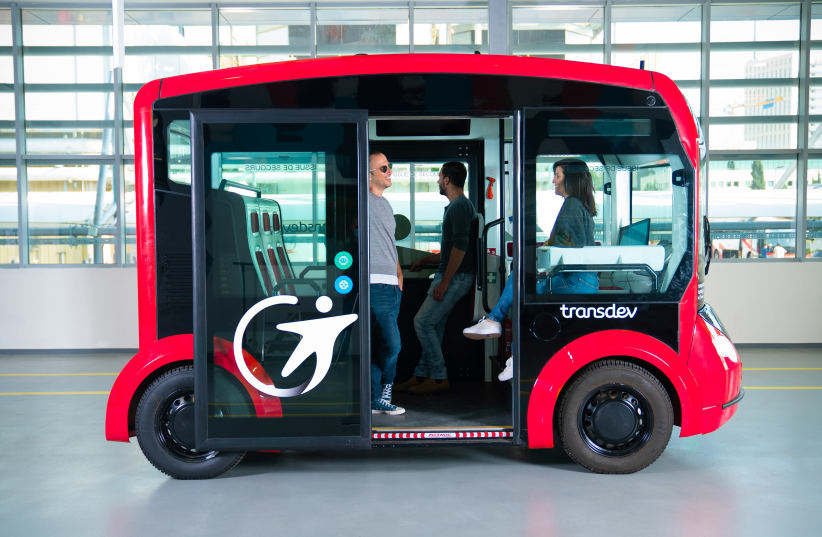Jerusalem-based Mobileye said Thursday it signed an agreement to develop and deploy self-driving shuttles in Europe, with the objective of making self-driving public transportation a daily reality.
The partnership with France’s Transdev Autonomous Transport System (ATS) and Lohr Group will integrate Mobileye’s self-driving system into Lohr’s i-Cristal electric shuttle, with plans to integrate it into public transportation services across the globe, the companies said.
The three companies will initially test vehicles on roadways in France and Israel, aiming to ready technology designs for production by 2022. The companies expect to deploy self-driving i-Cristal shuttles in public transportation networks by 2023.
The electric i-Cristal shuttle, manufactured by Lohr Group, has space for up to 16 passengers, and can travel at speeds up to 50 kph. The shuttle is designed to safely and efficiently operate within public transportation networks, and is fully accessible via a ramp.
“The collaboration between Transdev ATS, Mobileye and Lohr Group is set to provide fully industrialized autonomous shuttles at a scale to support the urban autonomous vision,” said Marie-José Navarre, vice president of Lohr Group. “Our common goal is to quickly provide to clients autonomous shuttles that could be easily and efficiently implemented in cities.”
The new shuttles will improve the efficiency and convenience of mass transportation solutions, the companies said. Autonomous mobility can be used in transportation networks to distribute service when and where it’s needed, while also optimizing the fleets, lowering transportation costs and improving customer experience.
Mobileye’s self-driving system, which is already used by several car makers, uses a perception system whereby two independent camera and radar+lidar (laser) based subsystems combine to enable robust perception, along with a complex decision-making system for safety. The navigation system also uses a proprietary, crowdsourced AV map of the global road network that is constantly updated in real-time from mass-market advanced driver-assistance systems.

